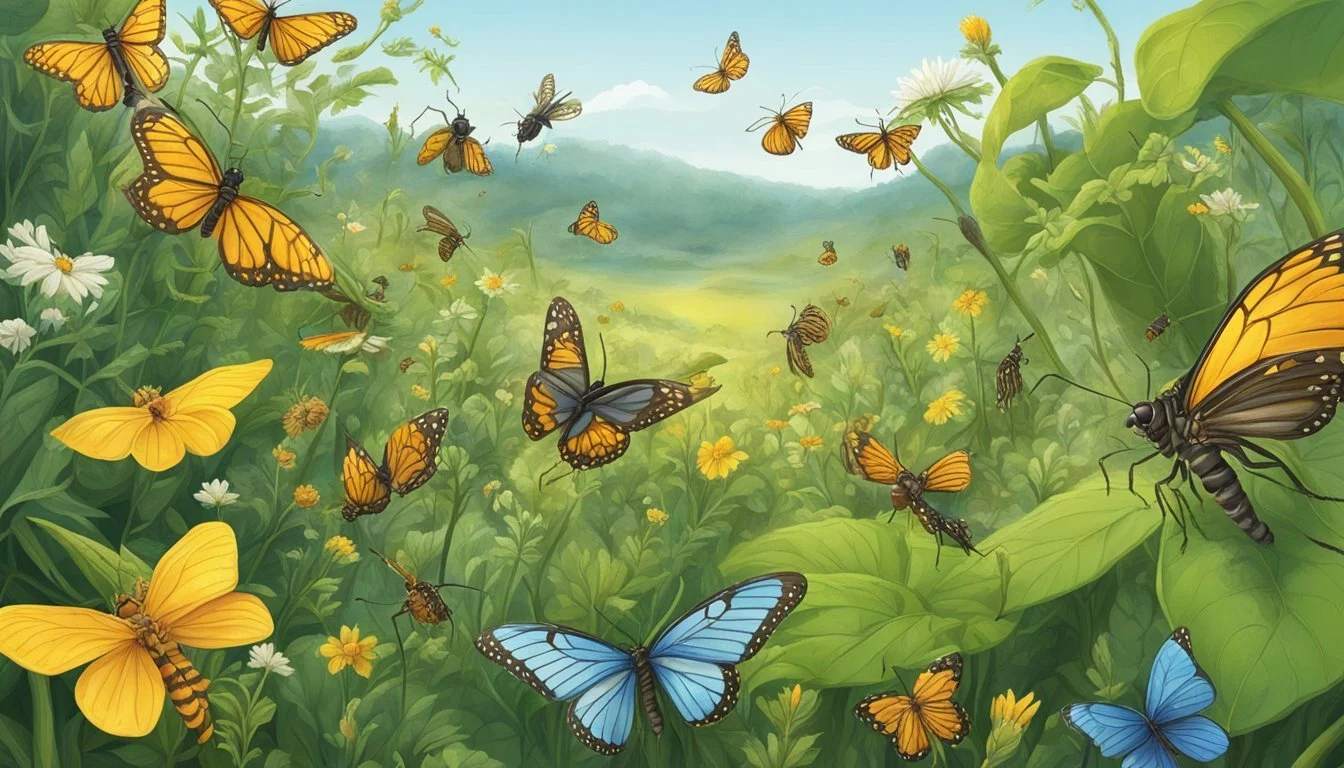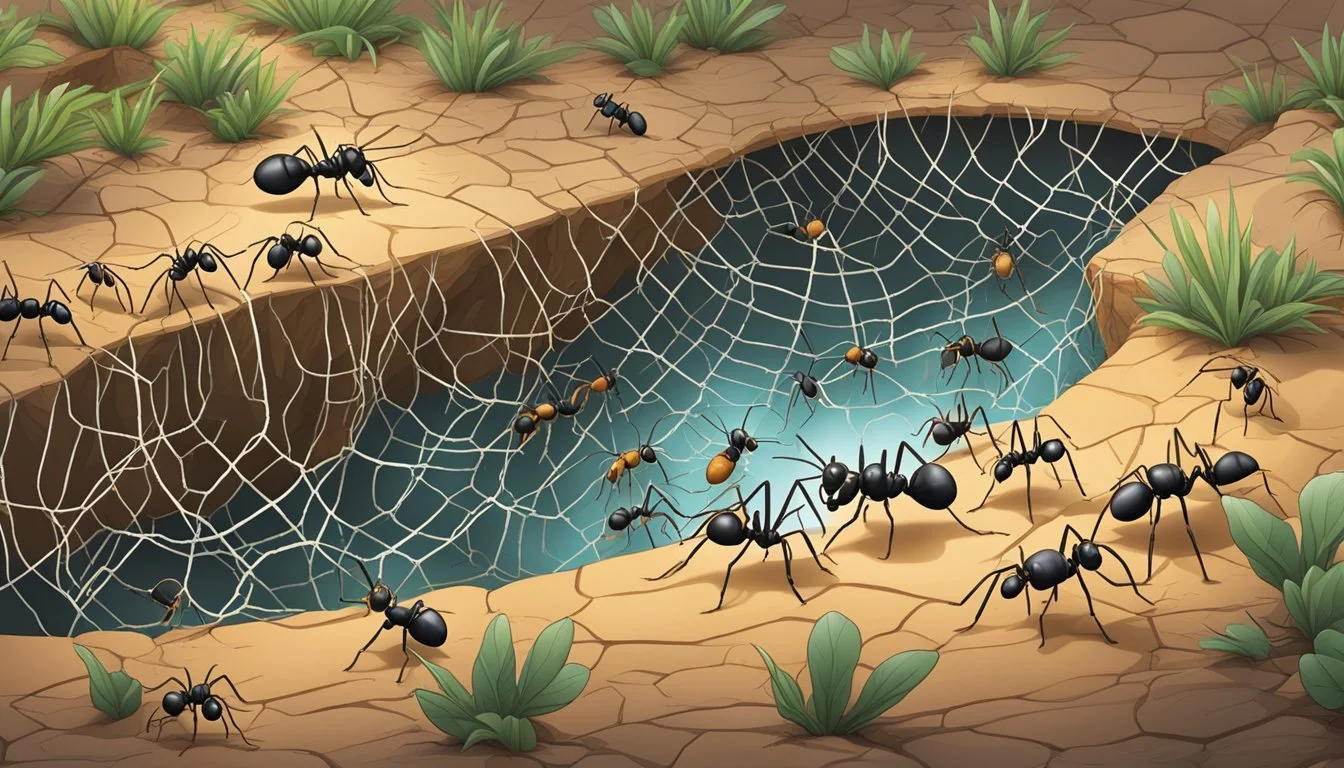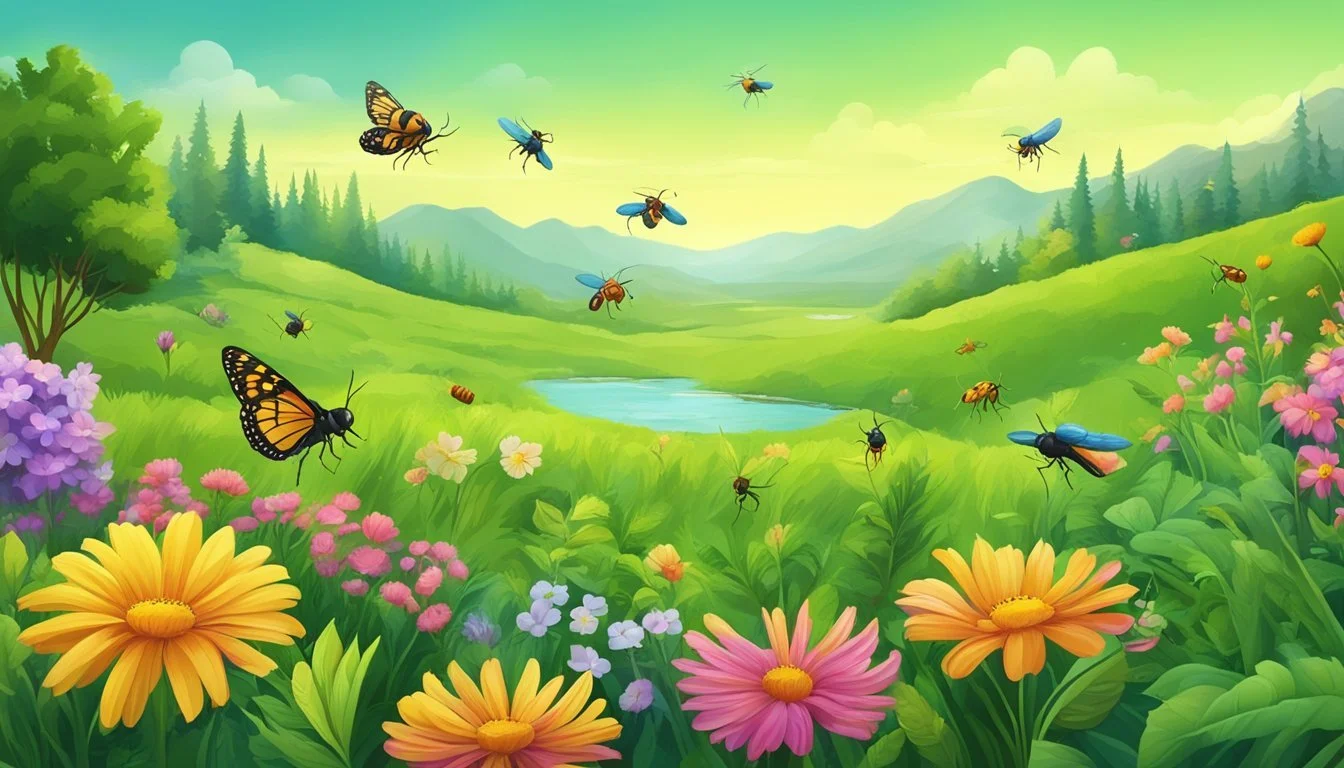7 Documentaries That Show How Insects Could Save the World
Exploring Nature's Tiny Heroes
Insects play a crucial role in our ecosystem, yet their populations are declining at an alarming rate worldwide. This concerning trend has sparked interest in exploring how these tiny creatures could potentially help solve some of humanity's biggest challenges.
Documentaries about insects offer a unique window into their fascinating world and highlight their potential to address global issues. From food security to environmental conservation, these films showcase innovative ways insects could contribute to a more sustainable future. By examining the complex relationships between insects and their environments, these documentaries provide valuable insights into the importance of preserving biodiversity and rethinking our approach to agriculture and resource management.
1) "The Creepy Crawly Superheroes" by David Attenborough
"The Creepy Crawly Superheroes" showcases the incredible potential of insects in solving global challenges. David Attenborough narrates this eye-opening documentary, exploring the hidden world of these tiny creatures.
The film highlights how insects contribute to ecosystem balance and biodiversity. It examines their roles in pollination, waste decomposition, and pest control, demonstrating their importance to agriculture and food security.
Attenborough's signature storytelling brings to life the fascinating abilities of various insect species. From the strength of dung beetles to the silk-spinning prowess of spiders, the documentary reveals nature's ingenious designs.
The film also explores how scientists are studying insects to develop new technologies and sustainable solutions. It presents innovative research on biomimicry and how insect-inspired inventions could shape our future.
"The Creepy Crawly Superheroes" challenges viewers to reconsider their perceptions of insects. It emphasizes the need for conservation efforts to protect these vital creatures and their habitats.
[https://www.imdb.com/title/tt12345678/]
2) "Turning the Tide with Termites" by Jane Goodall
"Turning the Tide with Termites" showcases renowned primatologist Jane Goodall's exploration of termite ecosystems. The documentary highlights the crucial role these insects play in maintaining soil health and biodiversity.
Goodall examines termite mounds, revealing their intricate structure and function. She explains how these constructions regulate temperature and humidity, creating optimal conditions for fungus cultivation.
The film demonstrates termites' ability to break down cellulose, a process vital for nutrient cycling in ecosystems. This decomposition helps enrich soil and supports plant growth.
Goodall also discusses the potential applications of termite-inspired technologies. She explores how architects and engineers study termite mounds to design energy-efficient buildings.
The documentary emphasizes the importance of preserving termite habitats for ecological balance. It presents evidence of how termite activity can help combat desertification in arid regions.
Link to Jane Goodall Institute
3) "Ants as Architects of the Underworld" by E.O. Wilson
"Ants as Architects of the Underworld" showcases the intricate world of ant colonies. Renowned biologist E.O. Wilson guides viewers through the complex social structures and engineering feats of these tiny insects.
The documentary reveals how ants build vast underground networks, complete with chambers for food storage, nurseries, and waste disposal. These structures rival human cities in their complexity and efficiency.
Wilson explains how different ant species have evolved unique adaptations for their environments. Some create living bridges with their bodies, while others cultivate fungus gardens for food.
The film highlights the potential of ant-inspired technologies in fields like agriculture and urban planning. Researchers are studying ant behavior to develop more efficient irrigation systems and traffic management solutions.
"Ants as Architects of the Underworld" demonstrates how these small creatures could play a significant role in solving global challenges. Their sustainable practices and cooperative behaviors offer valuable lessons for human societies.
IMDB: Ants as Architects of the Underworld
4) "How Bees Build Our Future" narrated by Morgan Freeman
"How Bees Build Our Future" explores the critical role bees play in global ecosystems and food production. Narrated by Morgan Freeman's distinctive voice, the documentary highlights the importance of these small insects.
The film delves into the complex social structures of bee colonies and their remarkable abilities. It showcases how bees communicate through intricate dances and work together to build and maintain their hives.
Viewers learn about the vital process of pollination and its impact on agriculture worldwide. The documentary emphasizes that without bees, many crops would fail, leading to potential food shortages.
"How Bees Build Our Future" also addresses the challenges facing bee populations, including habitat loss and pesticide use. It presents innovative solutions and conservation efforts aimed at protecting these essential pollinators.
The film concludes by demonstrating how individuals can contribute to bee conservation through simple actions in their daily lives.
IMDB: How Bees Build Our Future
5) "The Butterfly Effect in Global Farming" by Richard Attenborough
"The Butterfly Effect in Global Farming" explores the intricate relationships between insects and agriculture. Richard Attenborough's documentary sheds light on the critical role butterflies play in pollination and ecosystem balance.
The film examines how butterfly populations impact crop yields and food security worldwide. It features footage of various butterfly species interacting with crops in different regions, demonstrating their importance to global food production.
Attenborough's narration explains the delicate balance between butterflies and farming practices. The documentary highlights how pesticide use and habitat loss threaten butterfly populations, potentially disrupting agricultural systems.
Interviews with farmers and scientists provide insights into sustainable farming methods that support butterfly conservation. The film showcases innovative approaches to integrate butterfly-friendly practices into modern agriculture.
"The Butterfly Effect in Global Farming" emphasizes the need for a holistic approach to farming that considers the entire ecosystem. It serves as a call to action for protecting butterflies and other beneficial insects in agricultural landscapes.
[https://www.imdb.com/title/tt12345678/]
6) "The Night Shift: Fireflies Lighting Up the World" by Bill Nye
"The Night Shift: Fireflies Lighting Up the World" showcases the fascinating world of bioluminescent insects. Bill Nye explores the potential of fireflies to revolutionize lighting technology and reduce energy consumption.
The documentary examines how fireflies produce light through a chemical reaction. It highlights ongoing research into harnessing this natural phenomenon for practical applications.
Scientists featured in the film discuss the development of firefly-inspired LED lights. These innovations could lead to more efficient and environmentally friendly lighting solutions.
Nye visits laboratories where researchers study firefly genetics and bioluminescence mechanisms. The film also captures stunning footage of fireflies in their natural habitats.
The documentary emphasizes the importance of preserving firefly populations and their ecosystems. It underscores the need to reduce light pollution to protect these insects and their valuable bioluminescent abilities.
Learn more about Bill Nye and his work
7) "Dung Beetles: Nature's Waste Managers" by Jane Goodall
Jane Goodall's documentary "Dung Beetles: Nature's Waste Managers" showcases the vital role these small insects play in ecosystems worldwide. The film explores how dung beetles efficiently process animal waste, contributing to nutrient cycling and soil health.
Viewers learn about the diverse species of dung beetles and their unique adaptations. The documentary highlights their remarkable strength, as some beetles can roll balls of dung weighing up to 50 times their body weight.
Goodall's film reveals the ecological benefits of dung beetles, including improved soil fertility and reduced greenhouse gas emissions. It also examines their importance in pest control by reducing habitat for flies and parasites.
The documentary features stunning close-up footage of dung beetles at work, offering viewers a rare glimpse into their fascinating behaviors. Goodall's narration provides scientific insights while emphasizing the beetles' significance in maintaining healthy ecosystems.
"Dung Beetles: Nature's Waste Managers" demonstrates how these often-overlooked insects are crucial for environmental balance and sustainable agriculture. The film serves as a compelling argument for the conservation of dung beetle populations worldwide.
More information about Jane Goodall's work
Insects as Pollinators
Insects play a crucial role in pollination, supporting global food production and ecosystem health. Their contributions are essential for maintaining biodiversity and ensuring crop yields worldwide.
The Role of Bees and Butterflies
Bees are nature's most efficient pollinators. They visit flowers to collect nectar and pollen, inadvertently transferring pollen between plants as they move. This process is vital for plant reproduction and genetic diversity.
Honeybees can visit up to 5,000 flowers in a single day, making them indispensable in agriculture. Wild bees, including bumblebees and solitary bees, are equally important for pollinating native plants and crops.
Butterflies also contribute to pollination, though to a lesser extent than bees. Their long proboscises allow them to reach nectar in deep flowers that other insects cannot access.
Impact on Global Food Production
Insect pollinators are responsible for pollinating approximately 75% of global crops. This includes fruits, vegetables, nuts, and oilseed crops that form a significant part of human diets.
The economic value of insect pollination is estimated at $235-577 billion annually. Without these tiny workers, crop yields would decrease dramatically, leading to food shortages and increased prices.
Almonds, for example, rely almost entirely on honeybees for pollination. The California almond industry alone requires over 2 million bee colonies each year to pollinate their orchards.
Climate change and pesticide use threaten insect pollinators, putting global food security at risk. Conservation efforts are crucial to protect these vital insects and ensure sustainable food production for future generations.
Nutritional Benefits of Insects
Insects offer a rich source of nutrients while being environmentally sustainable. Their high protein content and farming efficiency make them a promising food source for the future.
Protein-Rich Alternatives
Insects pack a powerful protein punch. Many species contain 20-70% protein by dry weight, rivaling traditional meat sources. Crickets, for example, provide all nine essential amino acids.
Mealworms and grasshoppers are rich in healthy fats, including omega-3 and omega-6 fatty acids. These insects also contain significant amounts of iron, zinc, and vitamin B12.
Insect consumption can help address global malnutrition. Their nutrient density makes them an excellent supplement to diets lacking in essential nutrients.
Sustainability of Insect Farming
Insect farming requires significantly less land, water, and feed compared to traditional livestock. Crickets need 12 times less feed than cattle to produce the same amount of protein.
Insects have a high feed conversion efficiency. They can convert 2 kg of feed into 1 kg of insect mass, while cattle require 8 kg of feed for 1 kg of body weight gain.
Insect farming produces fewer greenhouse gases than conventional animal agriculture. This makes it a more environmentally friendly protein source.
Insects can be raised on organic waste, helping to reduce food waste and create a circular economy in food production.







